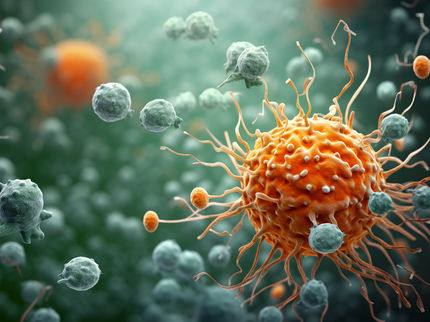microRNA network study implicates rewired interactions in cancer
genes interact in complex networks that govern cellular processes, much like people connect a social network through relationships. Researchers are now discovering how biological networks change and are rewired in cancer. In a study published in Genome Research, scientists have analyzed the genetic networks of microRNAs in tumors, shedding light on how interactions go awry in disease.
MicroRNAs (miRNAs) are short RNA molecules encoded by plant, animal, and viral genomes that have garnered significant interest for their ability to regulate gene expression. Many critical biological processes are regulated by miRNAs, and recent evidence has shown that alterations in miRNA expression is involved in human tumor development and metastasis.
Investigations into the role of miRNAs in cancer up until now have largely focused on the function and expression of individual miRNAs, but miRNA function is more complex and interwoven. “MicroRNAs were always considered as singles, generally unrelated to each other in the miRNA world,” said Ohio State University researcher Carlo Croce. “We did not know much about how miRNAs cooperate.”
Because a single miRNA is likely to regulate many genes, and each target gene may be regulated by more than one miRNA, Croce and an international team of colleagues suggested that in order to capture the complex patterns of miRNA expression in cancer, the system must be thought of as a “social network” that coordinates the delicate balance of gene regulation.
Croce explained that in healthy tissues, miRNAs are connected in networks and different cell types have different network connections. In cancer, it is likely that normal network interactions have become disrupted or rewired, contributing to disease.
The group analyzed patterns of miRNA expression levels in a large set of normal and cancerous tissue samples, mapping groups of miRNAs exhibiting highly related patterns of expression. Once relationships were recognized, they could then build a genetic network revealing the most highly connected miRNAs, called “hubs.”
When comparing the miRNA networks built from normal tissues to the networks built from tumor samples, Croce’s team found cases where the miRNA networks have been reprogrammed in cancer. In some cases, they found that the highly connected miRNA hubs changed between cancer and normal tissues.
They also identified even more extreme cases of tumor network changes. “Groups of miRNAs go awry and exit from the ‘social network’ altogether,” Croce said. “In solid cancers there can be a few, or more, groups of such misbehaved miRNAs, while in leukemias we found only one or two.” Some of these “unsocial” miRNAs have well-known roles in cancer, but others had not been implicated until now.
This work is particularly significant in that novel cancer genes have been discovered utilizing a strategy based on relationships, rather than up or down regulation of expression. “The miRNAs we discovered can now be used as targets for drug development,” Croce added, “or to pinpoint candidate proteins, which, in turn, they regulate.”
Original publication: Volinia S, Galasso M, Costinean S, Tagliavini L, Gamberoni G, Drusco A, Marchesini J, Mascellani N, Sana ME, Abu Jarour R, et al.; "Reprogramming of miRNA networks in cancer and leukemia."; Genome Res 2010.
Most read news
Topics
Organizations
Other news from the department science

Get the life science industry in your inbox
By submitting this form you agree that LUMITOS AG will send you the newsletter(s) selected above by email. Your data will not be passed on to third parties. Your data will be stored and processed in accordance with our data protection regulations. LUMITOS may contact you by email for the purpose of advertising or market and opinion surveys. You can revoke your consent at any time without giving reasons to LUMITOS AG, Ernst-Augustin-Str. 2, 12489 Berlin, Germany or by e-mail at revoke@lumitos.com with effect for the future. In addition, each email contains a link to unsubscribe from the corresponding newsletter.
Most read news
More news from our other portals
Last viewed contents
Genes linked with malaria's virulence shared by apes, humans

Better than Humans: Artificial Intelligence in Intensive Care Units - An AI can suggest appropriate treatment steps in cases of blood poisoning: The computer has already surpassed humans in this respect
Patellar_reflex
Seymour_S._Kety
Congenital_absence_of_the_vas_deferens
Mucolipidosis
Cerenis Reports Positive Results for Phase 1 Study of CER-001, an HDL mimetic, for the Treatment of Cardiovascular Disease
Deer_Horn_Knives























































